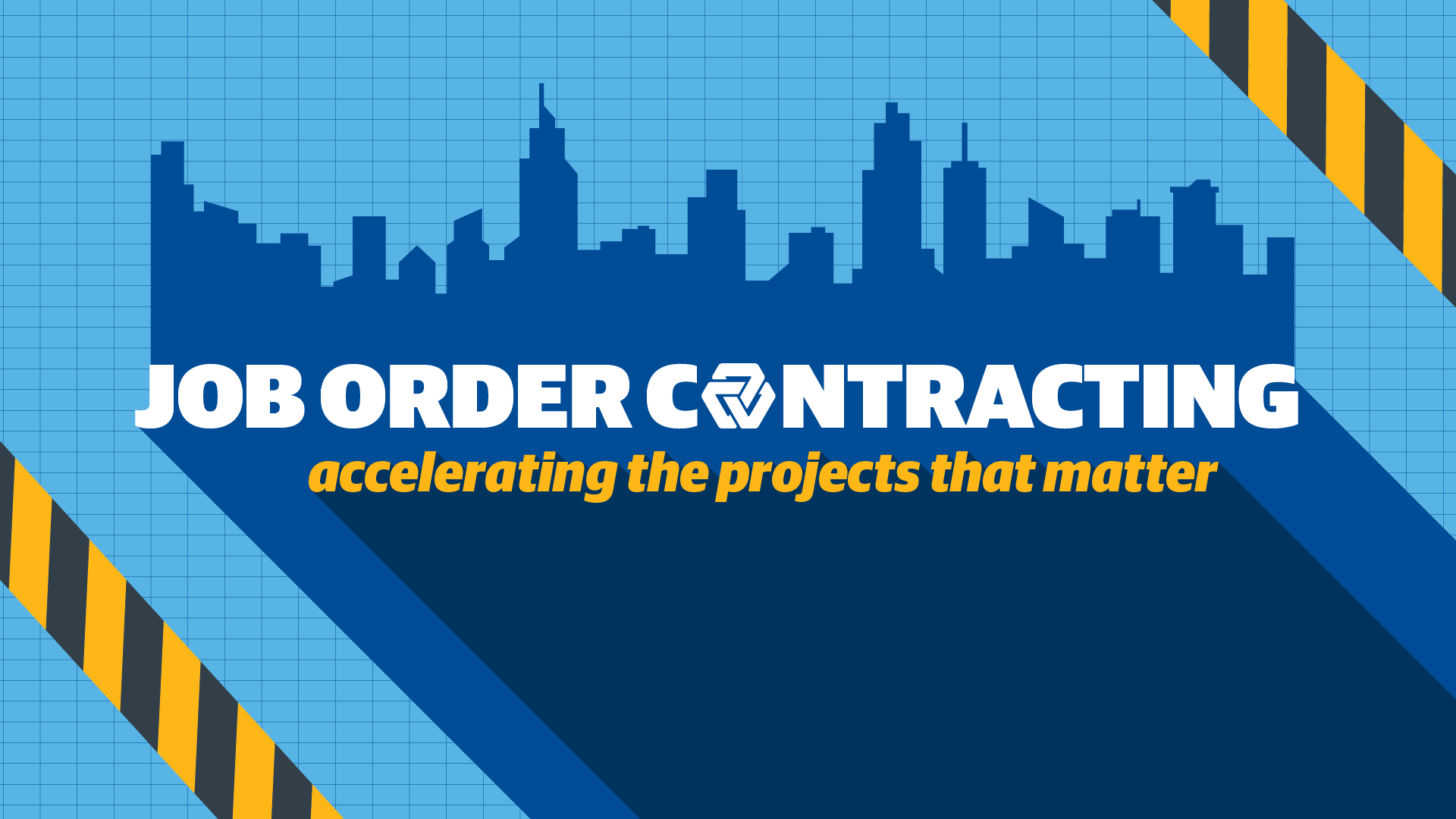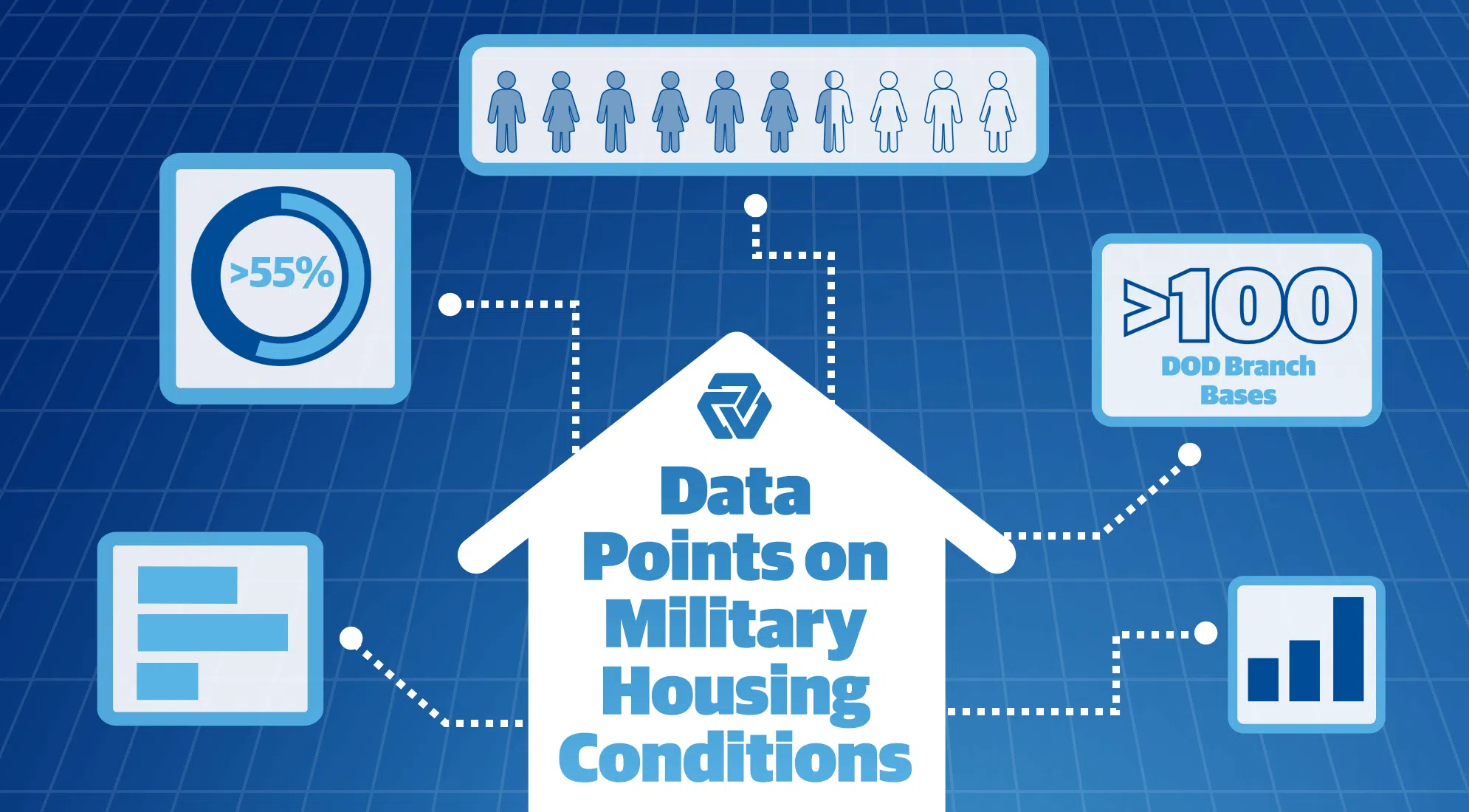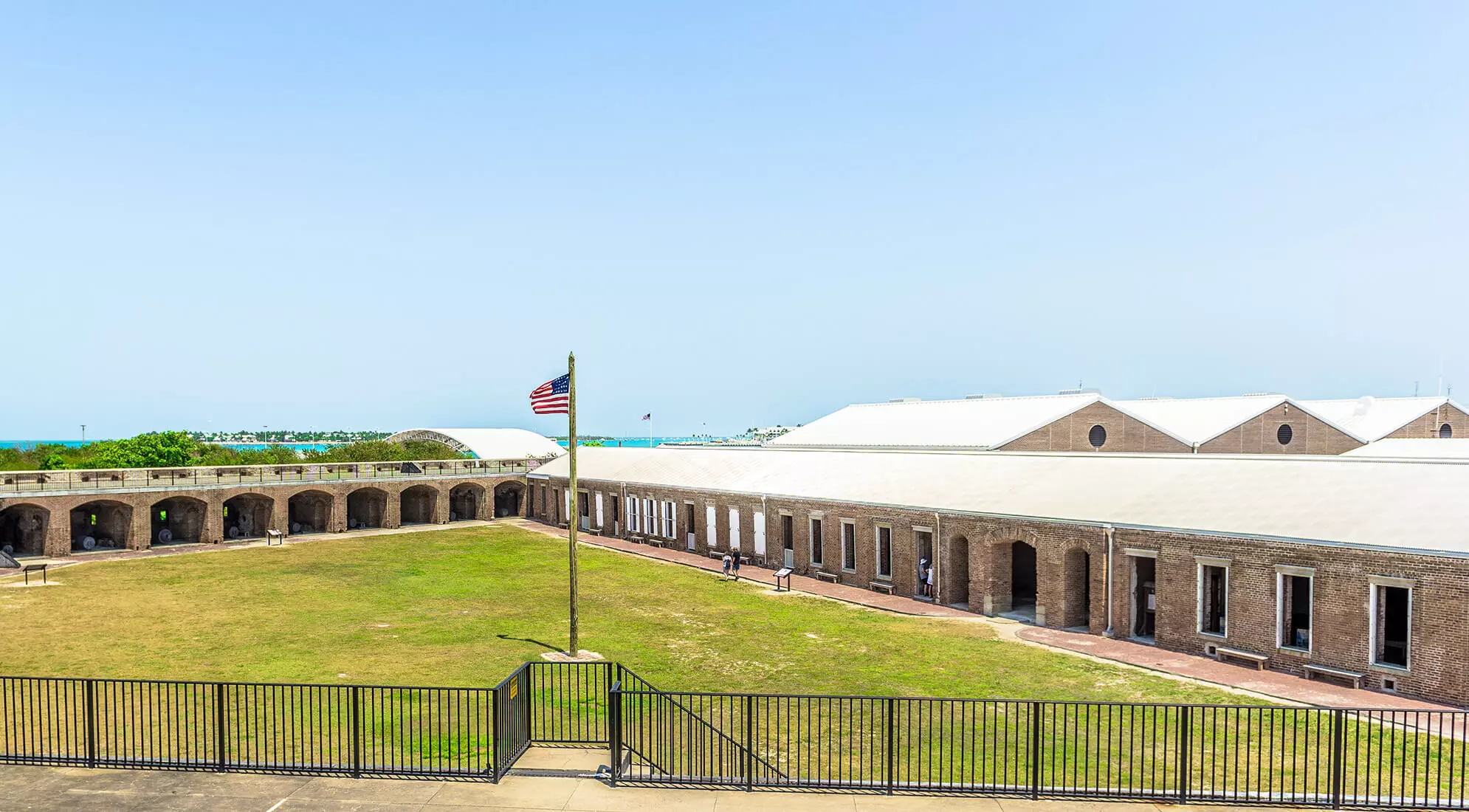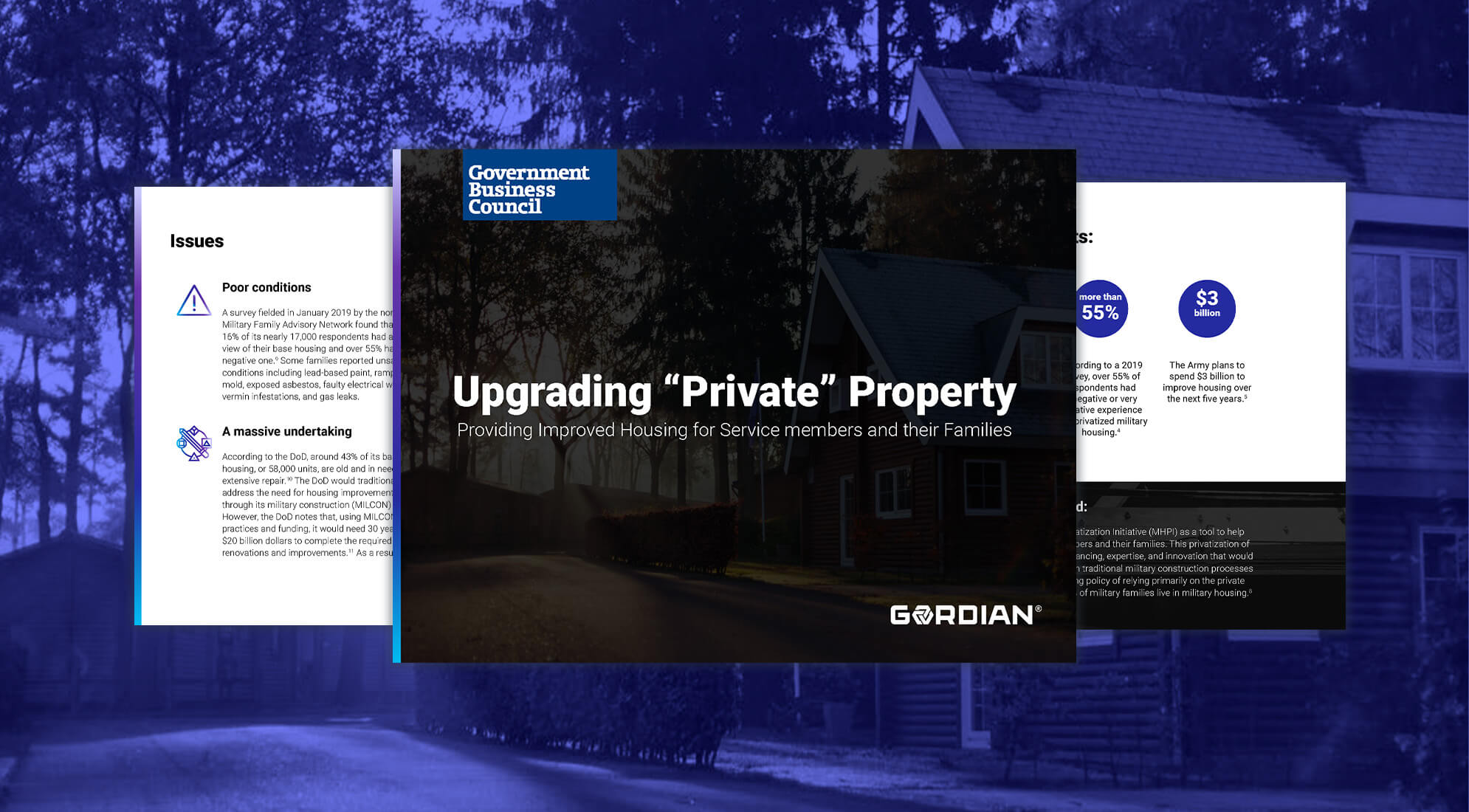The Department of Defense (DOD) is planning to make significant financial investments aimed at improving military housing over the next five years. This investment is warranted and long overdue.
About 700,000 military families live in privately owned housing units across more than 100 DOD branch bases. However, according to a recent survey, over 55% of military families had a negative or very negative experience with privately owned military housing. These results should not be surprising given that a whopping 43% of the DOD’s total housing units, including private units, are in poor condition. This is hardly the experience the DOD wants to deliver to servicemembers and their families.
While the military tries to catch up with its current housing needs, it must also consider ways to keep up with future needs, so living conditions never deteriorate this badly again. Possible solutions for improving military housing have come from several organizations, most notably the Government Accountability Office (GAO) and the Military Officers Association of America (MOAA). In this post, we’ll explore a few of those recommendations and add our own as well.
Let’s begin with the GAO.
GAO Recommendations for Improving Military Housing
In March of 2022, the GAO released a report about the “DOD’s Efforts to Address Oversight Challenges” related to private military housing. In the report, the fourth on the subject since 2018, the GAO lists 30 recommendations for improving “deficiencies in DOD’s oversight” of privatized housing. The DOD has implemented half of those recommendations, but there remains ample opportunity for improvement. Here are two recommendations the DOD has yet to adopt.
Improved Data Validation Practices
While the DOD has established minimum data requirements and consistent practices for data collection – one of the GAO’s chief recommendations – it has not updated its data validation processes. Here’s why that’s important: A private partner may provide data about work order intake and completion, but the DOD needs a way to independently verify that data to ensure the requested improvements are completed.
Regular, Transparent Reporting
The GAO made several recommendations for reporting to Congress on subjects ranging from the financial condition of private military housing to the sustainment of military housing projects and risk assessments of those projects. These reports would keep the DOD accountable for improving military housing and result in durable homes for military families.
MOAA Recommendations for Improving Military Housing
The MOAA advocated for several items in the FY 2020 National Defense Authorization Act (NDAA), a law that represents the most comprehensive military housing reform since the mid-1990s. Here are a few provisions they fought for successfully.
Creation of a “Tenant Bill of Rights”
Perhaps the MOAA’s most significant achievement relative to the 2020 NDAA is the inclusion of a foundational document establishing tenant rights and responsibilities. The “Tenant Bill of Rights” includes the right to know historical issues with a given housing unit, provides guidance for communicating concerns and outlines when tenants can withhold rent. This will go a long way toward leveling the playing field between tenants and landlords.
Reimbursement for Housing Related Healthcare Costs
Families have reported such harmful conditions as lead-based paint, rat infestations, exposed asbestos and even rampant mold in military housing. Any one of these hazards can be harmful to one’s health. The NDAA will ensure that military housing partners will now be on the hook for medical conditions caused by unsafe conditions.
Additionally, landlords will be expected to pay relocation or dislocation costs for tenants living in unsafe conditions. This recommendation creates a financial incentive for private housing partners to complete military housing improvements quickly and thoroughly.
Better Communication With Residents
Historically, the responsibilities belonging to the military and those belonging to housing partners have been unclear. As a result, families have been bounced from stakeholder to stakeholder as they try to have their concerns addressed, suffering in substandard housing all the while.
The NDAA calls for better resident communication to clarify which entity handles which actions and to streamline typical housing procedures, including the move-in/move-out processes. This clarity should enhance the resident experience.
Gordian’s Recommendations for Improving Military Housing
A Custom Military Housing Construction Dataset
Accurate housing construction estimates and risk assessments require a reliable dataset for budgeting and decision-making. Gordian has a history of producing custom RSMeans datasets for the federal government, including for FEMA’s hurricane relief grants.
More applicable to the current military housing crisis is Gordian’s work with Nellis Air Force Base in Nevada. The Air Force and its privatized housing partner turned to us to act as an independent authority on construction costs. Using our industry-leading RSMeans Data, we developed a custom Construction Cost Index to reflect the local material, labor and equipment costs that featured predominantly in the planned construction work on the base.
The possession of such a dataset would help ensure military bases allocate enough resources for improving military housing and give them a clear understanding of the financial risks of any project.
IDIQ Project to Delivery to Address Needs Faster
The DOD is going to have a slew of routine repairs and replacements on its hands as it attempts to improve the conditions of military housing. And when it comes to completing many simpler projects, there is no better vehicle than IDIQ project delivery methods like Gordian’s Job Order Contracting (JOC).
JOC allows many projects to be completed with a single, competitively awarded contract. This single-solicitation method enables projects to start faster. In fact, a recent survey conducted by Gordian and the National Institute of Governmental Purchasing (NIGP) found that JOC gets projects started 25% faster than traditional project delivery methods. This unmatched speed makes JOC an ideal procurement tool for tackling the military housing backlog.
Improving Military Housing Require a Multi-Faceted Approach
Servicemembers give so much to protect our nation, and it’s the responsibility of the DOD and its private housing partners to protect members and their families in return. Clearly, there’s considerable room for improvement in their doing so. To make the most of the opportunity, the military must acknowledge the necessity of a multi-pronged approach and pull multiple levers to address the current housing needs.
Each of the recommendations outlined above represents a step toward improving military housing, and none of them are exclusive to others. The best approach to providing military families with the living experience they deserve is by enacting several or all of these recommendations in succession.








